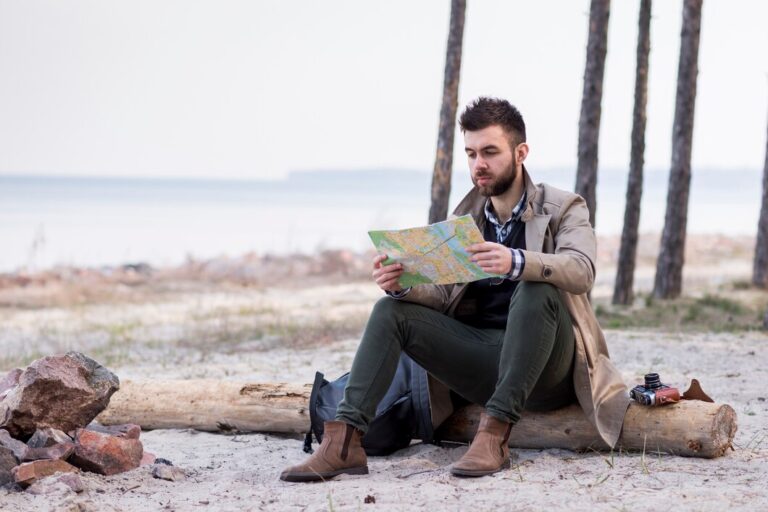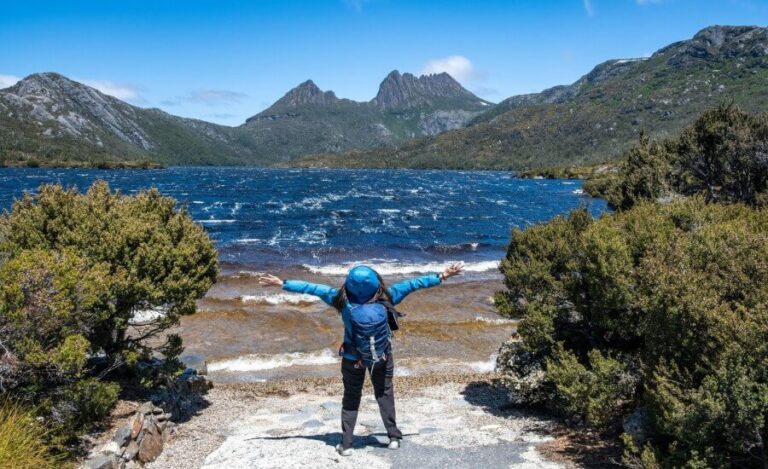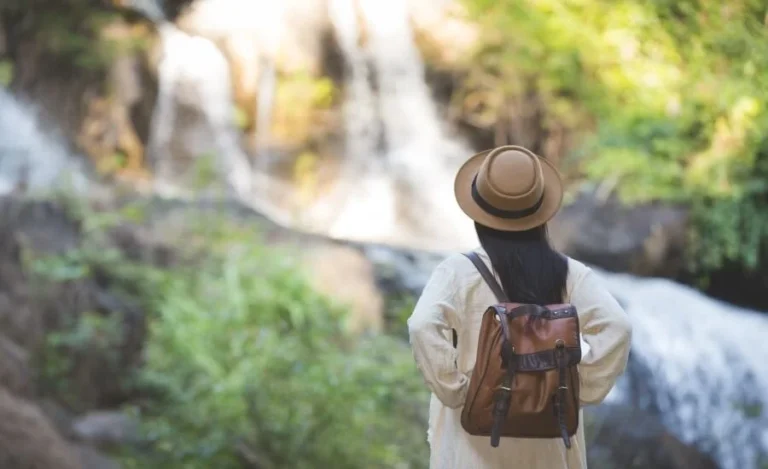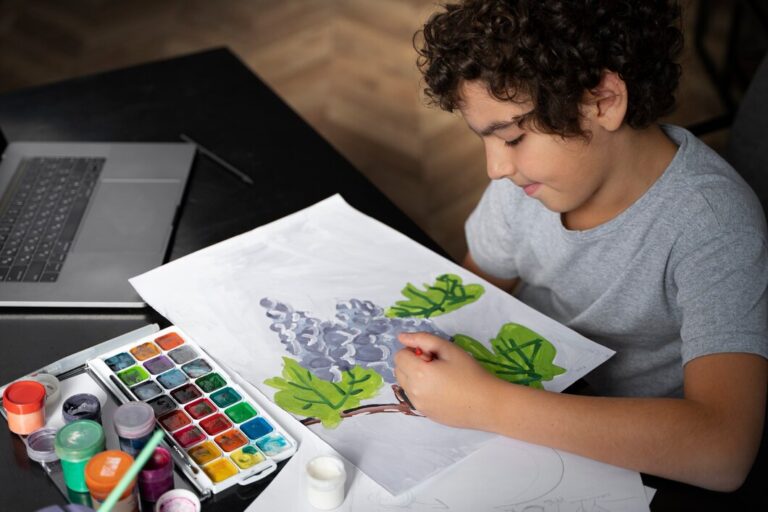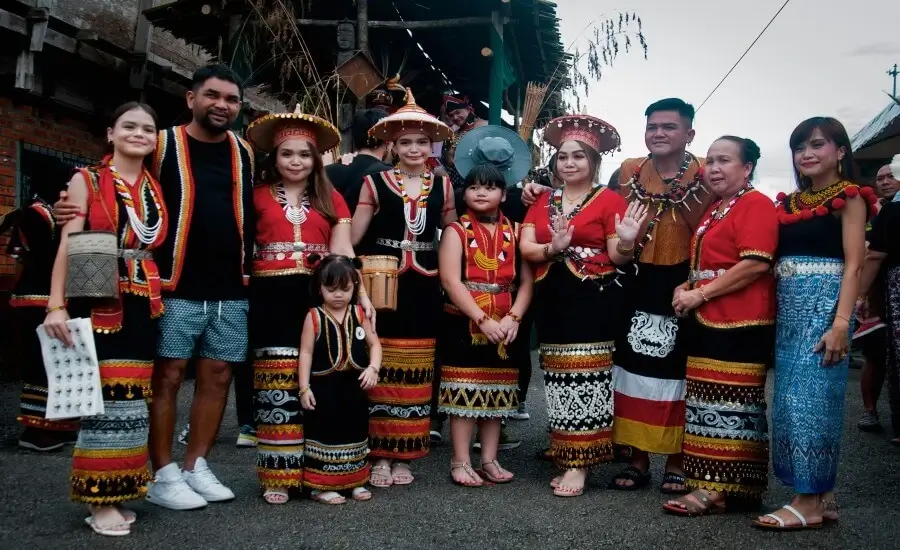
In an age where experiences are often filtered through smartphone screens and social media feeds, there exists a profound hunger for something more authentic direct encounters with different ways of living that challenge our perspectives and expand our understanding of what it means to be human. True cultural immersion offers this transformation, but many travelers believe it requires expensive tours or luxury accommodations to access meaningful cross-cultural connections.
My own journey into budget-conscious cultural immersion began after a disappointing trip to Barcelona, where I spent more time photographing Gaudí’s architecture and posting updates than actually experiencing the Catalonian way of life. I returned home with hundreds of photos but few genuine insights or memories. That realization sparked a decade-long exploration of how to experience cultures deeply without expensive tours or digital mediation and often on a surprisingly modest budget.
This guide explores extraordinary cultural immersion experiences accessible to budget-conscious travelers willing to put down their devices and engage directly with communities around the world. These opportunities cost significantly less than conventional tourism while offering something far more valuable: genuine connection, cultural understanding, and the kind of perspective-shifting experiences that continue to resonate long after returning home.
What Makes a Truly Immersive Cultural Experience?

Before exploring specific opportunities, it’s worth understanding what genuine cultural immersion actually entails — and why it differs fundamentally from conventional tourism, even when visiting cultural sites.
Beyond the Tourist Bubble
True immersion requires stepping outside the infrastructure created specifically for visitors (hotels, tourist restaurants, packaged experiences) and engaging with places and activities created by and for local communities. This shift in context creates opportunities for genuine exchange rather than consumption of cultural performances.
The most transformative immersion experiences share several key characteristics:
- Reciprocal exchange: You’re not just observing but contributing something valued by the host community
- Sustained engagement: Allowing enough time (days or weeks, not hours) for deeper understanding to develop
- Everyday life participation: Engaging in routine activities rather than only special occasions or performances
- Language learning: Making efforts, however basic, to communicate in local languages
- Technology reduction: Minimizing digital mediation to ensure direct, present-moment experience
The Surprising Economics of Immersion
What many travelers don’t realize is that authentic immersion often costs significantly less than conventional tourism. When you engage with communities on their own terms, participate in everyday economic exchanges, and step away from infrastructure designed to extract maximum profit from visitors, expenses naturally decrease.
The most budget-friendly immersive experiences typically involve:
- Homestays rather than hotels
- Public transportation instead of tourist shuttles
- Skill exchange or volunteering components that reduce monetary costs
- Longer stays in fewer locations, reducing transportation expenses
- Eating where locals eat rather than at tourist-oriented restaurants
This approach not only saves money but ensures that more of your spending directly benefits local communities rather than international corporations or tourism intermediaries.
1. Language Immersion Homestays: The Original Cultural Deep Dive

Perhaps the most accessible and transformative cultural immersion experience available to budget travelers is the language homestay — living with a local family while studying their language, participating in daily life, and experiencing culture through the lens of everyday activities.
Budget-Friendly Options
While premium language schools can be expensive, numerous affordable alternatives exist:
Community Language Cooperatives in Guatemala
In towns around Lake Atitlán like San Pedro and San Marcos, community-run language cooperatives offer one-on-one Spanish instruction combined with family homestays for approximately $175-250 per week — including all meals, accommodation, and 4-5 hours of daily private lessons. These programs directly support indigenous Maya communities while providing immersion in both Spanish and Maya cultures.
University Partnerships in Morocco
The Center for Language and Culture in Fez partners with local universities to offer Arabic immersion programs with family homestays for approximately $650 per month. Students participate in family life, from shopping in neighborhood markets to preparing traditional meals and attending community celebrations. The extended timeframe allows for gradual integration into neighborhood networks beyond the host family.
Community-Based Programs in Thailand
In northern Thailand, particularly around Chiang Mai, community organizations offer Thai language immersion with family stays for approximately $300-400 per week. These programs often include participation in community projects, rotating through different households to experience various aspects of Thai family life and connect with multiple generations.
Deepening the Experience
To maximize both cultural learning and budget efficiency:
- Commit to a technology routine: Establish specific, limited times for device use rather than constant connectivity, allowing full presence in household activities.
- Develop a daily documentation practice: Instead of constant photo-taking, establish a daily ritual of written reflection or audio recording to process cultural observations.
- Master household contributions: Learn to perform at least one household task according to local methods, whether it’s food preparation, childcare routines, or home maintenance.
- Expand beyond the home: Ask family members to introduce you to their everyday spaces — workplaces, community gathering spots, places of worship — to understand the full context of their lives.
- Exchange skills rather than just receiving instruction: Offer to teach something from your own cultural background, creating reciprocity rather than one-way learning.
The most successful budget homestay experiences involve treating the arrangement not as a service transaction but as a genuine cultural exchange, with curiosity and contribution flowing in both directions.
2. Traditional Craft Apprenticeships: Learning Through Making

For travelers who learn best through physical engagement, traditional craft apprenticeships offer immersion through the universal language of making. These experiences connect you directly with cultural knowledge systems that have developed over generations, often in communities that maintain practices increasingly rare in industrialized contexts.
Budget-Friendly Options
Pottery Villages in Japan
While high-end ceramics apprenticeships can be costly, communities like Onta in Kyushu offer more accessible two-week introduction programs for approximately $600-800, including simple accommodations with potting families, materials, and instruction in traditional wood-firing techniques. Participants contribute to household and workshop tasks while learning, reducing costs while deepening community integration.
Textile Cooperatives in Peru
In the Sacred Valley, particularly around Chinchero, weaving cooperatives offer one- to three-week apprenticeship programs for $350-500. These include instruction in traditional Quechua techniques from natural dyeing to backstrap loom weaving, with accommodations in cooperative members’ homes and participation in community activities.
Woodcarving Traditions in Indonesia
In Bali and Java, family woodcarving workshops offer apprenticeships ranging from two weeks to three months, with costs of $200-400 per month including simple accommodations and daily instruction. These arrangements typically involve contributing to workshop production once basic skills are developed, creating a reciprocal relationship that keeps costs low while maintaining program sustainability.
Deepening the Experience
The key to meaningful craft apprenticeships lies in understanding that you’re not just learning techniques but entering cultural knowledge systems:
- Move beyond technique to context: Ask about the cultural significance of patterns, materials, and forms rather than focusing solely on how-to aspects.
- Document process rather than just results: Instead of photographing only finished pieces, develop documentation practices that capture learning sequences and connections to broader cultural practices.
- Engage with material sourcing: Whenever possible, participate in gathering or processing raw materials to understand the craft’s relationship with local environments.
- Connect with multi-generational practitioners: Seek opportunities to work with both elders and younger craftspeople to understand how traditions adapt over time.
- Participate in the craft economy: Learn how items are marketed, valued, and distributed in both local and tourist contexts to understand economic dimensions of cultural production.
These apprenticeships often involve simple living conditions and integration into family workshops, naturally reducing costs while increasing cultural understanding through daily proximity and shared purpose.
3. Agricultural Immersion: Cultural Understanding Through Food Systems

Few aspects of culture reveal more about values, history, and social organization than food systems. Agricultural immersion experiences connect travelers directly with land-based communities through participation in seasonal activities, from planting to harvest to processing, while learning how local food traditions reflect broader cultural patterns.
Budget-Friendly Options
Olive Harvest Cooperatives in Greece
Particularly on islands like Crete and Lesvos, family farms and agricultural cooperatives welcome volunteers during the November-December olive harvest. In exchange for 4-6 hours of daily work, participants receive accommodation, meals featuring farm products, and integration into the intensely social harvest period where multiple generations work together. Programs like Olive Harvest Greece coordinate placements for approximately $150-250 per week to cover basic expenses.
Rice Farming Homestays in Vietnam
In northern regions like Sapa and Mai Chau, community tourism initiatives connect travelers with farming families for agricultural immersion experiences costing approximately $20-35 per day, including homestay accommodation, meals, and farming instruction. These programs often coincide with significant agricultural periods like transplanting or harvest, when entire communities mobilize in traditional cooperative work patterns.
Vineyard Experiences in Georgia (Country)
In the Kakheti region, family vineyards offer immersion in one of the world’s oldest winemaking traditions during the September-October harvest season. For approximately $25-40 per day, participants join in harvesting, traditional foot-pressing methods, and the fascinating qvevri underground fermentation process, while living with winemaking families and experiencing the elaborate hospitality traditions of Georgian culture.
Deepening the Experience
Agricultural immersion offers unique opportunities for understanding culture through ecological relationships:
- Learn the cultural calendar: Understand how seasonal activities structure time, celebrations, and community organization throughout the year.
- Engage with preservation methods: Traditional food preservation techniques reveal core values and historical adaptations to environmental conditions.
- Participate in commensality: Food sharing practices, from everyday meals to celebrations, often reveal social structures and relationship patterns.
- Connect with seed systems: Understanding how seeds are saved, shared, and selected offers insights into both practical knowledge and value systems.
- Document recipe knowledge: Beyond ingredients, learn the contextual knowledge of when and why certain foods are prepared, their significance, and their place in cultural identity.
These experiences naturally limit digital engagement, as agricultural work requires physical presence and attention to environmental conditions rather than device interaction. The resulting connection to place, seasonal rhythms, and community cooperation often provides profound contrast to the decontextualized pace of digital life.
4. Religious Pilgrimage Routes: Slow Travel with Cultural Depth

Long before modern tourism, pilgrimage created frameworks for cross-cultural encounter and hospitality. Today, historical pilgrimage routes offer budget travelers extraordinarily rich cultural immersion through structured journeys designed for meaningful encounter rather than consumption, often with infrastructure specifically created to support travelers of modest means.
Budget-Friendly Options
The Kumano Kodo in Japan
This network of ancient pilgrimage routes through the mountainous Kii Peninsula connects major Shinto and Buddhist sanctuaries, with community-run minshuku (guesthouses) offering accommodation for approximately $30-60 per night including traditional meals. The dual-faith nature of these routes provides insight into Japan’s syncretic religious traditions while connecting travelers with rural communities maintaining traditional lifeways increasingly rare in urban Japan.
The Camino de Santiago in Spain
While increasingly popular, this medieval Christian pilgrimage network still offers remarkable budget access to Spanish culture, particularly on less-traveled routes like the Camino Primitivo or Camino del Norte. The albergue (pilgrim hostel) system provides accommodations for approximately $8-20 per night, while pilgrim menus at local restaurants offer regional cuisine at reduced prices. The tradition of walking these routes creates natural community among both international pilgrims and local residents.
Sufi Shrine Circuits in Pakistan
For more adventurous travelers, the shrine circuits of Sindh and Punjab provinces offer immersion in South Asian Sufi traditions with their emphasis on inclusive spirituality and musical expression. The traditional langar (free kitchen) system provides meals at major shrines, while modest guesthouses in shrine towns cost approximately $10-25 per night. These circuits connect travelers with devotional practices central to regional cultural identity while demonstrating hospitality traditions that transcend religious boundaries.
Deepening the Experience
Pilgrimage routes offer unique structures for meaningful cultural engagement:
- Adopt traditional practices: Even if you don’t share the religious beliefs, respectful participation in route traditions like carrying credential documents, collecting stamps, or observing site-specific rituals connects you to centuries of traveler experience.
- Embrace physical challenge: The embodied experience of walking significant distances creates natural community with fellow travelers and locals who recognize and respect the pilgrim journey.
- Engage with route infrastructure: Historical pilgrim routes feature layered support systems, from water sources to rest areas to accommodation networks, that reveal much about community values and hospitality traditions.
- Learn route narratives: Every pilgrimage path carries multiple stories—historical, legendary, personal—that provide frameworks for understanding cultural values and identity formation.
- Practice pilgrim economics: These routes often feature specific economic traditions (fixed prices, sliding scales, donation systems) that differ from conventional tourism and reveal alternative value systems.
The inherent slowness of pilgrimage travel covering distances on foot rather than by vehicle—naturally creates deeper engagement with landscapes and communities while limiting digital distraction through physical fatigue, limited charging infrastructure, and the social norms of pilgrim communities that often discourage excessive device use.
5. Urban Microimmersions: Cultural Depth in City Neighborhoods

While rural immersion often seems most accessible, urban environments offer equally rich opportunities for budget-friendly cultural engagement when approached through neighborhood-based microimmersion—focusing deeply on a single district rather than attempting to cover an entire city as a conventional tourist might.
Budget-Friendly Options
Neighborhood Stay Programs in Istanbul
Community organizations in districts like Fener-Balat arrange homestays with local families for approximately $25-40 per night including breakfast, providing immersion in the everyday life of these historically diverse neighborhoods. Participants shop at local markets, prepare meals with host families, and gain access to community spaces like traditional coffeehouses where locals gather for conversation and games.
Housing Cooperative Exchanges in Berlin
Berlin’s housing cooperative movement offers cultural exchange programs where visitors can stay in cooperative apartments for approximately $20-30 per night while participating in cooperative activities from community gardens to cultural events. These arrangements provide insight into alternative urban living models while connecting travelers directly with residents engaged in creative approaches to housing, sustainability, and community governance.
Neighborhood Immersion in Mexico City Colonias
In districts like Coyoacán or Roma Norte, network housing platforms match travelers with local residents offering spare rooms for approximately $15-30 per night, often including neighborhood orientation and integration into local routines from morning market visits to evening cultural events. These arrangements provide direct insight into the extraordinary diversity and complexity of Mexico City’s distinct neighborhood cultures.
Deepening the Experience
Urban microimmersion offers unique opportunities for understanding contemporary cultural adaptation:
- Master local transit systems: Public transportation reveals much about urban social organization and provides natural opportunities for daily interaction with residents.
- Establish daily routines in neighborhood spaces: Becoming a regular at a local café, market, or park creates opportunities for relationship development beyond superficial encounters.
- Follow local information flows: Neighborhood bulletin boards, local newspapers, and community radio provide insight into concerns and celebrations beyond what appears in tourist information.
- Participate in maintenance activities: Joining in neighborhood clean-ups, community projects, or cooperative work days provides direct experience of how urban communities sustain themselves.
- Document everyday aesthetics: Attention to how urban spaces are decorated, maintained, and personalized reveals values and identities not apparent in official cultural sites.
The budget savings from neighborhood focus come not just from lower accommodation costs but from engaging with everyday commerce rather than tourist-oriented businesses—shopping where residents shop, eating where they eat, and participating in free or low-cost community activities rather than expensive attractions.
6. Festival Volunteering: Cultural Immersion Through Celebration

Festivals concentrate cultural expression, making them natural opportunities for immersion. While attending as a spectator can be expensive and superficial, volunteering offers budget travelers access to the inner workings of cultural celebrations while contributing needed support to host communities.
Budget-Friendly Options
Kumbh Mela Seva Programs in India
This massive Hindu pilgrimage festival, held on a rotating basis in four sacred cities, welcomes volunteers through organizations like Kumbh Seva that provide free basic accommodation and meals in exchange for 4-6 hours of daily service in areas from sanitation to lost-and-found assistance. The experience offers extraordinary immersion in devotional practices central to Hindu traditions while demonstrating the remarkable logistics of what may be the world’s largest gathering.
Cultural Festival Networks in Eastern Europe
Organizations like the FEST Network connect volunteers with traditional cultural festivals across countries like Romania, Bulgaria, and Hungary, offering free accommodation, meals, and festival access in exchange for support roles from setup to translation to documentation. These opportunities provide insight into both traditional cultural expressions and their contemporary adaptations while connecting volunteers directly with organizing communities.
Indigenous Celebration Support in Ecuador
During major indigenous celebrations like Inti Raymi (June solstice), community organizations in the Otavalo region welcome volunteers to assist with preparation, logistics, and cleanup in exchange for accommodation with local families and full participation in ceremonies. These arrangements provide extraordinary access to living indigenous traditions while supporting communities managing increasingly complex celebrations.
Deepening the Experience
Festival volunteering creates unique opportunities for cultural understanding:
- Engage with preparation phases: The days or weeks before public celebrations often reveal more about cultural values and organization than the events themselves.
- Learn celebration-specific vocabulary: Every festival has specialized terminology that provides insight into its cultural significance and historical development.
- Observe intergenerational knowledge transfer: Festivals often showcase how cultural knowledge passes between generations through specific roles and responsibilities.
- Document temporal sequences: Understanding the structure of celebrations—their timing, progression, and conclusion—reveals underlying cultural frameworks.
- Participate in both public and private components: Many celebrations include both community-wide activities and more intimate household or family observances that reveal different dimensions of cultural identity.
The volunteer role naturally reduces technological mediation, as service responsibilities require present-moment attention rather than documentation. This shift from observer to participant fundamentally transforms the festival experience from consumption to contribution, often resulting in invitations to more private or family-centered celebration aspects not accessible to ordinary visitors.
Read more: Immerse in African Culture Through Volunteer Projects
7. Traditional Music and Dance Immersion: Cultural Learning Through Artistic Practice

Artistic traditions provide direct access to cultural expression through the universal languages of sound and movement. While performances for tourists often present simplified versions of complex traditions, learning-based immersion connects travelers directly with artistic knowledge systems and their cultural contexts.
Budget-Friendly Options
Community Music Schools in Mali
In Bamako, institutions like the Jinja Tree offer traditional instrument instruction (particularly djembe, kora, and balafon) with cultural context for approximately $10-15 per daily lesson, with simple accommodation available for $8-15 per night. These programs often include participation in community performances and celebrations, providing insight into how musical traditions function within social contexts.
Dance Immersion in Salvador, Brazil
Cultural centers in this northeastern Brazilian city offer immersion in Afro-Brazilian dance traditions, particularly those associated with candomblé spiritual practices. Programs costing approximately $250-400 per week include daily instruction, cultural context workshops, and participation in community activities, with homestay options providing additional cultural depth through family integration.
Traditional Arts Workshops in Ubud, Bali
While increasingly touristic, this cultural center still offers genuine immersion through family-run arts schools teaching traditional Balinese music, dance, and shadow puppetry. Weekly programs costing approximately $150-300 include daily instruction and cultural context, with simple homestay accommodation available with teaching families for $15-30 per night, including meals and household integration.
Deepening the Experience
Artistic immersion offers unique pathways to cultural understanding:
- Connect practice to context: Learn not just techniques but when, why, and for whom particular arts are performed in their original cultural settings.
- Understand transmission systems: Traditional arts maintain specific teaching methodologies that reveal broader cultural values around learning, respect, and mastery.
- Engage with material culture: Musical instruments, dance costumes, and performance spaces themselves contain cultural knowledge about values, history, and social organization.
- Recognize variation and improvisation: Understanding what elements remain fixed and what allows for personal expression reveals core cultural values and adaptation mechanisms.
- Participate in performance ecology: Learning who constitutes appropriate audiences, what feedback is valued, and how artistic expression circulates within communities provides deeper cultural insight than technical mastery alone.
The immersive focus on embodied learning naturally reduces digital dependency, as artistic traditions require physical presence, sensory attention, and mentor relationships rather than information acquisition. Many traditional arts also explicitly incorporate cultural values around presence, attention, and community that directly counter the fragmentation of digital experience.
Mindful Engagement: Practices for Deepening Cultural Immersion

Regardless of which immersion path you choose, certain practices enhance the depth and impact of cross-cultural experiences while naturally reducing technological dependence:
The Daily Documentation Practice
Rather than constant social media updating or photo-taking, establish a structured reflection ritual:
- Set aside 20-30 minutes each day for undistracted documentation
- Create a specific format combining:
- Three observations about cultural patterns you’re noticing
- Two questions that arose from the day’s experiences
- One insight about your own cultural assumptions being challenged
- Use analog methods—handwritten journals or voice recording—rather than digital platforms
- Review previous entries regularly to identify emerging patterns and deepening understanding
This practice not only creates more meaningful records than scattered digital documentation but trains attention toward cultural patterns rather than superficial observations.
The Language Commitment
Even minimal language learning dramatically transforms immersion experiences:
- Master at least 25 essential phrases before arrival
- Commit to learning five new useful expressions each day
- Create specific language contexts where you use only local language, no matter how basic
- Develop a language partner relationship with a community member
- Focus on culturally specific vocabulary that doesn’t translate directly
This commitment not only deepens community relationships but shifts attention from visual documentation to verbal engagement, naturally reducing screen dependency while building neural pathways that enhance cultural perception.
The Five Senses Inventory
Countering the visual dominance of digital culture, this practice systematically engages all sensory pathways:
- Each day, focus attention on a different sense as primary
- Document specifically how this sense reveals cultural patterns:
- What does this culture sound like? (Music, language, environmental sounds)
- What tactile experiences define daily life? (Textures, materials, physical interactions)
- What tastes are valued, when, and how are they experienced?
- What olfactory elements would be absent from digital documentation?
- Notice how sensory attention shifts your relationship with the environment from observation to participation
This practice directly counters the predominantly visual and abstract nature of digital engagement while revealing cultural dimensions inaccessible through screens.
Common Concerns & Solutions for Budget Cultural Immersion

“I’m worried about communication barriers.”
Solution: Limited language skills actually enhance rather than hinder true immersion when approached mindfully. In my experience, focusing on a core vocabulary of 50-100 words combined with openness to non-verbal communication creates more meaningful exchanges than perfect translation. Communities accustomed to hosting immersion experiences develop remarkable communication systems combining basic vocabulary, gestures, drawings, and shared activities that often reveal cultural patterns more clearly than fluent conversation. The effort itself communicates respect, while the resulting communications often focus on concrete experiences rather than abstractions, creating more embodied cultural understanding.
“I’m concerned about imposing on host communities.”
Solution: This valid concern requires thoughtful navigation. The key distinction lies between extractive tourism and reciprocal exchange. Programs developed by communities themselves (rather than external operators) typically incorporate appropriate compensation and contribution systems based on local values. Research organizations with long-term community relationships and transparent economic models. Most importantly, approach immersion with genuine skills to share, whether teaching English, assisting with digital documentation needs communities themselves identify, or contributing physical labor to community projects. The most successful immersion experiences involve mutual learning rather than one-way observation.
“How do I balance documentation with present-moment experience?”
Solution: This challenge intensifies in cultural immersion, where documentation impulses can create exactly the distance from experience you’re trying to overcome. I’ve developed a simple approach: designate specific, limited “documentation windows” (perhaps 15 minutes morning and evening) rather than continuous recording. Explain this practice to hosts and fellow travelers so they understand your periodically focused attention on recording. Consider one technology-free day per week to experience the difference in perception and relationship. Most importantly, ask permission before documenting people or practices, which both shows respect and creates opportunities for deeper understanding as people explain what can be shared and what cannot.
“I’m not sure I can disconnect from work completely while traveling.”
Solution: Complete disconnection isn’t necessary for meaningful immersion. Instead, create clear boundaries through temporal and spatial containment. Establish specific, limited times for digital work communication, ideally at hours that don’t conflict with community activities. Create physical separation by designating specific locations for connectivity rather than maintaining constant availability. Most importantly, communicate these boundaries clearly to both work colleagues and host communities so neither feels disrespected by divided attention. The contrast between focused connectivity and full presence actually enhances both experiences, allowing deeper engagement in each context.
Cultural Immersion Preparation Checklist

Essential Preparations:
- Research the cultural context beyond tourist information (history, values, current challenges)
- Learn at least 25 essential phrases in the local language
- Understand appropriate clothing and behavior norms
- Research appropriate contributions or compensation for your specific immersion context
- Prepare a small collection of photos/items from your own culture for sharing
- Develop at least one skill or story you can share with host communities
- Research culturally appropriate gifts if staying with families
- Learn about dietary practices and food-related customs
- Understand photography norms and permission practices
- Prepare for basic health needs with culturally appropriate approaches
- Research local environmental challenges to ensure your presence doesn’t exacerbate problems
- Develop specific questions about cultural elements you hope to understand better
Digital Mindfulness Strategy:
- Establish clear communication expectations with people at home
- Pre-download essential information for offline access
- Consider a basic phone rather than smartphone for necessary communication
- Create specific, limited windows for online engagement
- Prepare non-digital alternatives for activities you typically use technology for
- Set up an auto-response system for non-urgent communications
- Consider a digital sabbath practice for one day each week
- Prepare a physical journal for documentation instead of social media
Bringing Cultural Wisdom Home: Integration Practices

The most valuable outcomes of cultural immersion emerge not during travel but in how experiences transform everyday life after returning:
Create Integration Rituals
Rather than immediately returning to previous patterns, establish specific practices to process and integrate experiences:
- Schedule regular “cultural practice” sessions incorporating elements learned during immersion
- Create physical spaces in your home that reflect values or aesthetics encountered
- Develop ongoing relationships with people met during immersion through appropriate communication
- Join local communities practicing arts or traditions you encountered while traveling
- Incorporate food practices, daily rhythms, or social customs that resonated during your immersion
Share Through Depth Rather Than Breadth
Instead of overwhelming friends and family with comprehensive documentation, consider more thoughtful sharing approaches:
- Host small gatherings focused on specific aspects of your experience, perhaps around shared meals featuring dishes learned
- Create targeted presentations for groups with specific interests related to your immersion
- Develop comparative reflections on how different cultural approaches address universal human needs
- Offer workshops sharing specific skills or practices learned during immersion
- Create analog documentation (journals, sketches, audio recordings) that encourage different engagement than digital sharing
Apply Cultural Lenses to Home Environments
Perhaps most valuable is developing the ability to see your own cultural context with fresh perspective:
- Practice seeing familiar environments through the cultural frameworks encountered during travel
- Notice previously invisible patterns in your home culture revealed through comparison
- Identify which elements of encountered cultures might address challenges in your home context
- Recognize cultural assumptions you carried that immersion experiences challenged
- Develop ongoing learning relationships with cultural traditions that particularly resonated
Schedule Your Next Cultural Immersion
Building on insights from your experience, plan future immersion with greater intentionality:
- Identify cultural contexts that might complement or contrast with previous experiences
- Develop specific skills that would enhance future immersion opportunities
- Create learning goals based on questions that emerged during your experience
- Research opportunities for deeper engagement with particularly meaningful traditions
- Consider longer-term arrangements that allow for seasonal understanding of cultural patterns
The Deeper Invitation: Cultural Wisdom in a Fragmented World

Budget-friendly cultural immersion offers something beyond affordable travel experiences. These encounters provide living demonstrations of different ways of organizing human life, relating to environment, structuring time, and finding meaning alternatives increasingly valuable as digital acceleration and globalization create cultural homogenization.
When we step away from screens and into direct relationship with communities maintaining distinctive cultural traditions, we’re not simply having interesting experiences but participating in the essential human project of preserving diverse responses to universal human challenges. The wisdom encountered through immersion often directly addresses the fragmentation, isolation, and meaning deficits characteristic of contemporary digital society.
Perhaps most importantly, cultural immersion reminds us that some forms of understanding can only emerge through direct, embodied experience the kind of knowing that comes through participation rather than observation, through relationship rather than information acquisition. This embodied knowledge complements rather than replaces intellectual understanding, creating more integrated awareness of both self and world.
As you contemplate your own cultural immersion journey, consider that you’re not simply seeking an affordable travel experience but participating in what may be our era’s most important work: building bridges of understanding across difference while supporting the communities maintaining cultural diversity in an increasingly homogenized world.
These budget-friendly pathways await not as escapes from reality but as entrances to a more complex and textured understanding of human possibility, one that continues to unfold long after returning home.
